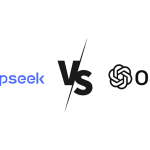DeepSeek AI V3: The Revolutionary Open-Source AI Model Redefining AI Standards
Artificial intelligence continues to evolve at breakneck speed, and DeepSeek AI V3, developed by the Chinese AI lab DeepSeek, is a prime example of this evolution. Released under a permissive open-source license, DeepSeek AI V3 combines cutting-edge technology with accessibility, marking a significant milestone in AI development. With its unparalleled performance across benchmarks, it is poised to challenge the dominance of both open-source and proprietary AI models. It’s not just an AI model but a statement that innovation can thrive even with limited resources and stringent restrictions.
The Unprecedented Power of DeepSeek AI V3
DeepSeek AI V3 boasts an extraordinary design, featuring 671 billion parameters and leveraging a Mixture-of-Experts (MoE) architecture. Unlike conventional AI models, MoE selectively activates subsets of parameters for specific tasks, enabling efficient processing without compromising performance. This innovative approach ensures that the model delivers optimal results across a variety of applications.
- Massive Training Dataset: DeepSeek AI V3 was trained on 14.8 trillion high-quality tokens, making it one of the most comprehensive datasets in use today. This vast dataset equips it with a nuanced understanding of complex tasks, from coding to language translation.
- Benchmark Domination: It outperforms models such as Meta’s Llama 3.1 (405B) and OpenAI’s GPT-4o across various coding and reasoning tasks. For instance, it excels in Aider Polyglot, a benchmark for integrating new code into existing systems, setting a new standard for efficiency.
- Cost Efficiency: DeepSeek trained this model using 2,048 Nvidia H800 GPUs over two months for just $5.5 million—a fraction of the budget typically required for such projects. This financial prudence highlights the ingenuity behind the model’s development process.
Speed and Accessibility
DeepSeek AI V3 delivers an impressive processing speed of 60 tokens per second, three times faster than its predecessor. This speed is critical for applications requiring real-time responses, making the model highly versatile for developers and end-users alike. Access options include:
- GitHub Release: The full model and accompanying technical papers are available for download, encouraging community-driven innovation and collaboration.
- API Compatibility: Users can seamlessly integrate the model into their applications without altering existing systems. This backward compatibility ensures minimal disruption during adoption.
- Affordable Pricing: Until February 8, 2025, API usage is priced at $0.27 per million tokens for input and $1.10 per million tokens for output, making it one of the most economical options on the market. This accessibility ensures that even smaller organizations can leverage its capabilities.
Benchmark Performance
DeepSeek AI V3 has set new standards in AI model evaluation, outperforming competitors in several key areas:
- Codeforces Competitions: Achieved superior results compared to industry leaders, demonstrating its prowess in coding tasks.
- Reasoning Tasks: Integrated advanced verification and reflection techniques from the DeepSeek R1 series, enhancing its problem-solving capabilities. This improvement underscores the model’s adaptability and intelligence.
- Comparison with GPT-4o and Claude 3.5 Sonnet: While DeepSeek AI V3 lags behind OpenAI’s o1 on the GPQA Diamond benchmark, it surpasses Claude 3.5 Sonnet across multiple performance metrics. This competitive edge makes it a strong contender in the AI landscape.
Challenges and Limitations
Despite its impressive achievements, DeepSeek AI V3 is not without challenges:
- Hardware Requirements: Running the unoptimized version requires high-end GPUs, limiting its practical application for smaller organizations. This limitation highlights the need for further optimization to broaden its accessibility.
- Regulatory Compliance: As a Chinese-developed model, it adheres to government regulations mandating alignment with “core socialist values.” This restricts its ability to address politically sensitive topics, such as Tiananmen Square, which could affect its adoption in certain markets.
- Cultural Biases: The model’s training dataset and regulatory constraints may lead to cultural biases, which developers will need to address to ensure broader applicability and fairness.
Impact on the Open-Source AI Ecosystem
DeepSeek AI V3’s release signals a shift in the global AI landscape. It demonstrates that frontier-grade AI capabilities are no longer exclusive to Western tech giants. By releasing the model under an open-source license, DeepSeek empowers developers worldwide to experiment, innovate, and build on its foundation. This democratization of AI technology is crucial for fostering a more inclusive and competitive ecosystem.
Additionally, DeepSeek’s success underscores the potential for cost-effective innovation. By achieving groundbreaking performance metrics with a relatively modest budget, the company sets an example for others to follow. With competitors like Alibaba Qwen 2.5 also making strides, the gap between open-source and proprietary models is narrowing. These developments underscore a broader trend toward democratizing AI technology, allowing developers worldwide to build innovative solutions that can compete with industry leaders.
The Road Ahead: Opportunities and Challenges
The introduction of DeepSeek AI V3 also raises important questions about the future of AI development. As more open-source models emerge, the competition between proprietary and open-source frameworks will likely intensify. This competition benefits end-users by driving innovation, reducing costs, and improving the quality of AI solutions.
However, the challenges of ethical AI development, such as ensuring unbiased decision-making and navigating complex regulatory landscapes, will remain pressing issues. DeepSeek’s adherence to local regulatory standards, while necessary, may limit its appeal in global markets. Addressing these challenges will be critical for the model’s sustained success and broader adoption.
Conclusion: A Paradigm Shift in AI Development
DeepSeek AI V3 is more than just a powerful AI model—it’s a testament to what can be achieved with limited resources and innovative strategies. Its open-source nature, coupled with groundbreaking performance metrics, sets a new benchmark for what AI can achieve. As the AI race continues, models like DeepSeek AI V3 will play a pivotal role in shaping the future of technology. The model’s affordability, speed, and openness make it a game-changer, heralding a new era of accessible and efficient AI development.






